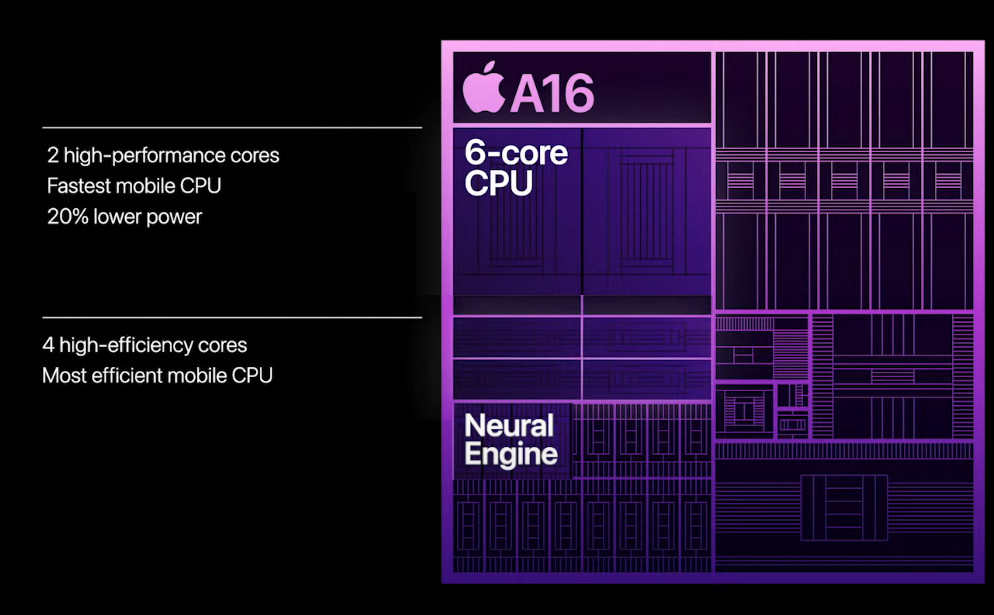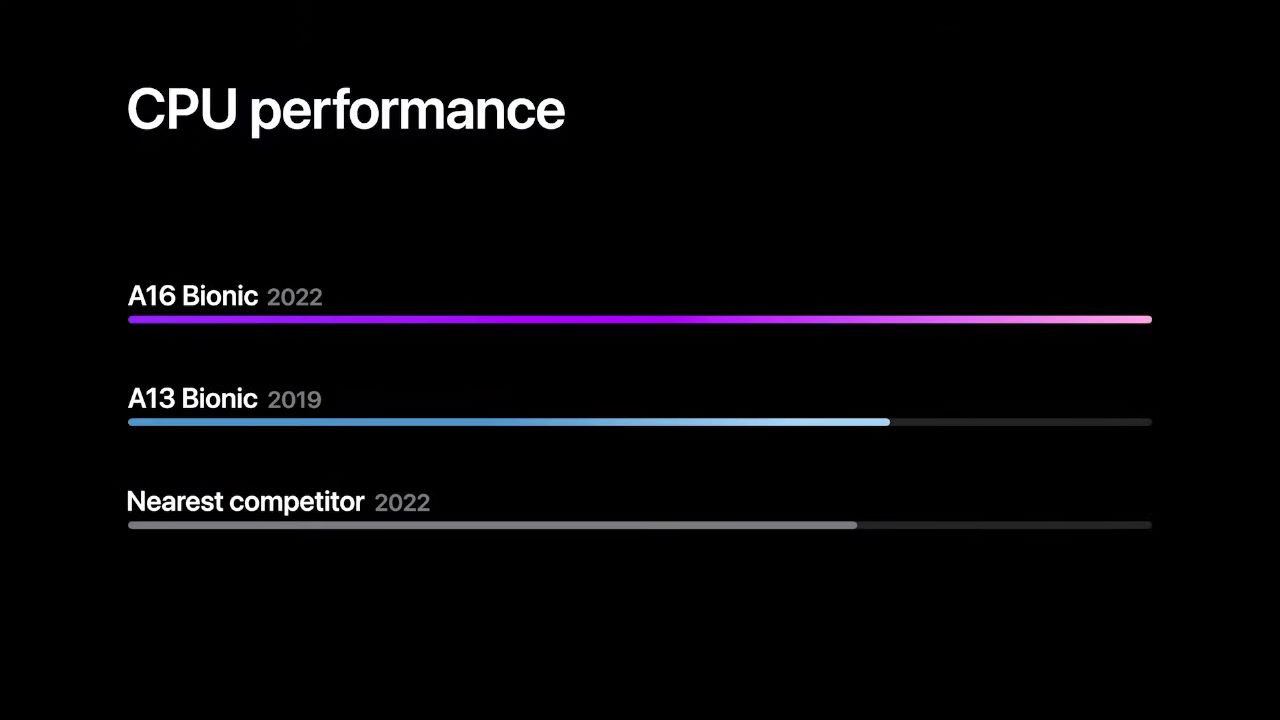Apple’s Latest A16 Bionic Chipset Blows Android Flagships Out of the Water in Leaked Geekbench Scores

Apple released the iPhone 14 lineup yesterday, at the Far-Out event, along with the new Apple Watch Series 8, Apple Watch Ultra, and the AirPods Pro Gen 2. Confirming rumors before launch, this year’s SoC, the A16 Bionic is only available on the Pro iPhone 14 models. While Apple did talk briefly about the A16 Bionic at yesterday’s event, Apple did not give out any hard numbers which would make a comparison tenable.
https://twitter.com/VNchocoTaco/status/1567793414317707265?s=20&t=mHgWFe0Q_2MqLMf-ENSTYA
The only actual performance metric comes from a leaked Geekbench test result, where the A16 gets a single-core score of 1879, and a multi-core score of 4664. Putting these numbers in context, this isn’t a big difference from last year’s A15 (on the iPhone 13 Pro) which generally scores around 1700 points in single-core and 4650 points in multi-core. Most of the gains are in the single-core test, where there seems to be a 9% improvement (approx). The multi-core test numbers are almost similar for the two.
Comparing it against the Android camp, and you can easily spot Apple’s comfortable lead. The flagship Snapdragon 8 Gen 1 manages to score only 1323 in the Single-Core test, and 4238 in the Multi-Core test.
With two high-performance cores and four high-efficiency cores, the new 6-core CPU is up to 40 percent faster than the competition and easily handles demanding workloads. A16 Bionic features an accelerated 5-core GPU with 50 percent more memory bandwidth — perfect for graphics-intensive games and apps
Does it Really Matter?
Well, yes and no. You would obviously want a phone with the best CPU possible, but that’s only part of the story. Geekbench is a synthetic benchmark that measures the CPU and memory compute performance. Higher scores generally indicate better performance, but it’s not a certainty.

Apple is so far ahead of the competition in the mobile SoC space that they can continue with iterative updates for years. In fact, even their older phones such as the iPhone XS is still a very smooth experience. The XS was released all the back in 2018, with the A12 Bionic SoC, which only scores 1115 points in single-core, and 2900 points in multi-core.
The A16 Bionic might not be that big of a performance upgrade, but that doesn’t mean there’s nothing to gain from a new silicon. For example, the A16 Bionic is built on TSMC’s 4nm node, which means it should be significantly more power efficient than the A15 Bionic. This would then translate to a better battery life for the iPhone 14 Pro, which according to Apple has the best battery on an iPhone yet.
The A16 Bionic also delivers more GPU bandwidth compared to the A15, as much as 50% according to Apple. The new SoC will also help in better image signal processing from last year, resulting in better photos on the newer phones.